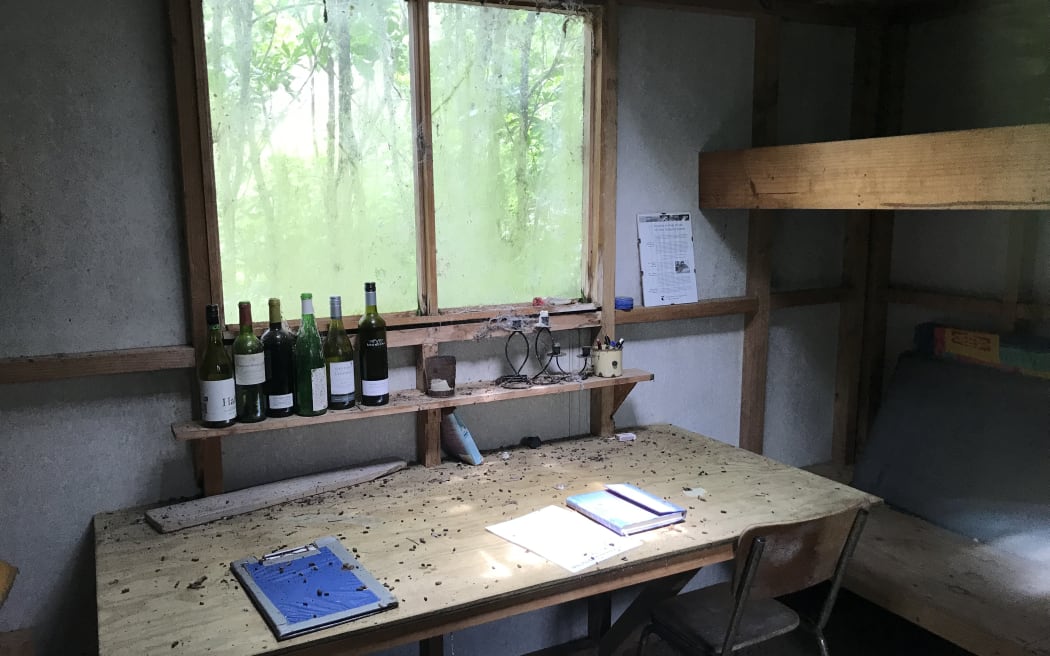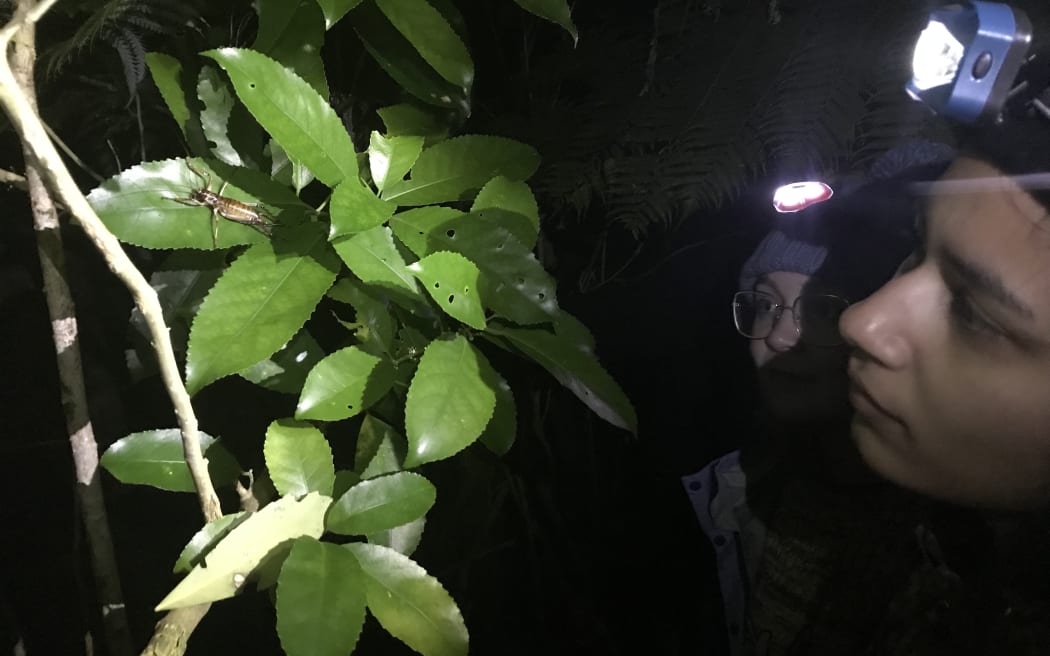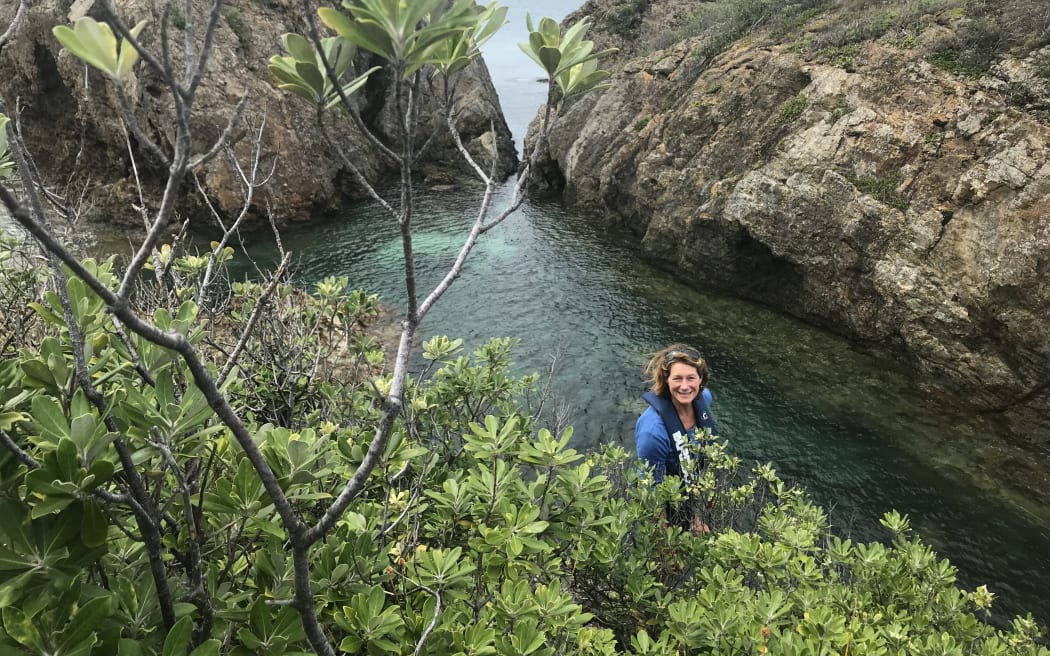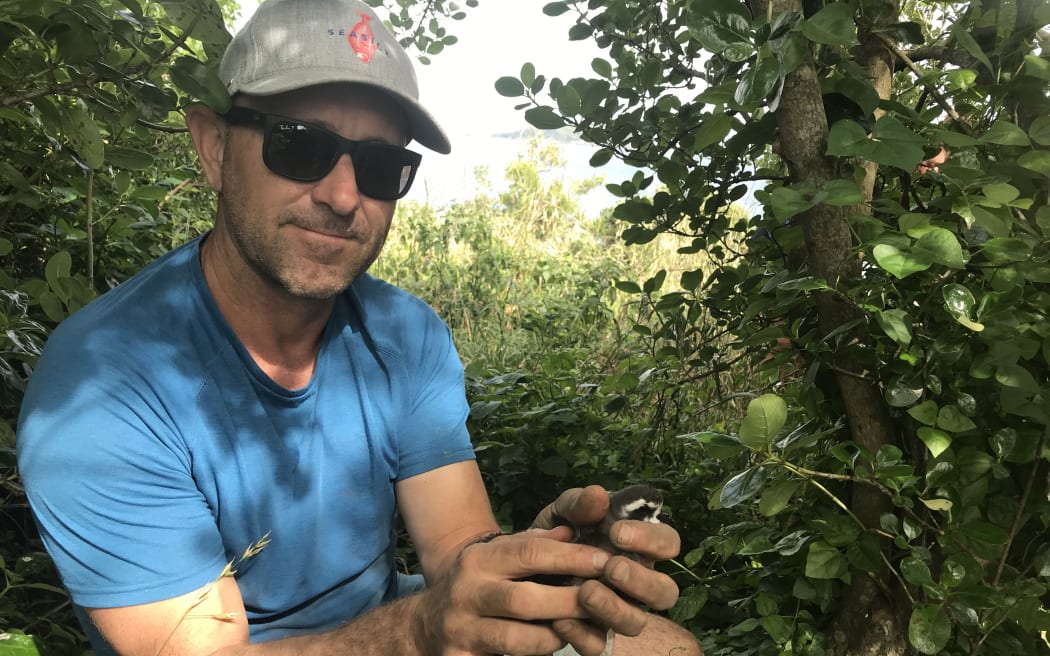On the small island of Motuhoropapa sits an old hut. Once it housed researchers who spent three years studying Norway rats, before dealing to them. Today new residents have moved in: giant wētā now thrive on this predator-free island.

The interior of the old Wildlife Services Hut on Motuhoropapa Island. Photo: Claire Concannon / RNZ
Follow Our Changing World on Apple Podcasts, Spotify, Stitcher, iHeartRADIO, Google Podcasts, RadioPublic or wherever you listen to your podcasts
The creaking wooden door opens up to a house-of-horrors scene – or exciting insect menagerie, depending on your persuasion. Brown pellets litter every surface. The culprit, a wētāpunga, casts a watchful eye from a dark corner high in the rafters above.
The first translocation of 1200 wētāpunga to Motuhoropapa took place in 2015, long after the rats had been removed. The giant wētā have made the forest theirs. But they are only one small part in the much larger picture of life on the Noises Islands.

A must-do activity for visitors to the Noises: night-time wētā watching. Photo: Claire Concannon / RNZ
Like little dribbles of paint that have dripped off a brush into the ocean, this collection of reefs, rock stacks and small islands sits in the inner Hauraki Gulf. Rakino Island is the nearest neighbour looking back towards Auckland, with the expanse of the outer gulf in the opposite direction.
The island group has been owned by the Neureuter family since 1933 when it was bought from a retired ship captain for 200 pounds. In 1995 the family formed the Noises Trust to help ensure long-term protection, and the islands were gifted to the Trust. The family’s goal is to continue the history of conservation research and education on and around the Noises.

Sue Neureuter at David Rocks Photo: Claire Concannon / RNZ
The most recent effort involves working with Tāmaki Paenga Hira, Auckland War Memorial Museum, to establish a comprehensive, long-term survey of the islands’ ecology. To do this, researchers from the museum travel to the islands each year to monitor seabirds, and to assess the vegetation, insect populations and forest bird diversity at specific plot sites. This will allow them to track changes in the island biodiversity and ecology over time.

Dr Matt Rayner holds a white-faced storm petrel. Photo: Claire Concannon / RNZ
And what could cause a major change in island ecology? Well, marine protection around the area might... But whether and when that will happen is still unknown.
Claire Concannon joins the group as they conduct their survey work to find out about the history of conservation on the islands, the cool creatures that call them home now, and their hopes for the future. Listen to the episode to hear part one of a two-part piece on the Noises Islands.
To learn more:
-
Dr Matt Rayner discussed his work on using isotopes to investigate what and where seabirds have been eating in the past in What feathers can tell us about the past lives of seabirds.
-
For more about seabirds in the Hauraki Gulf, listen to Edin Whitehead in For the love of seabirds or join Alison Ballance and a team of seabird experts on Seabird hotspot – the Poor Knights Islands.
-
Our Changing World has covered the wWētāpunga breeding programme success several times across the years. Listen to Boosting wētāpunga numbers from 2014, Wētāpunga breeding programme from 2012, or learn about recent (September 2022) developments from this piece on Lately: Wētāpunga released into mainland Aotearoa.
-
Visit the Noises Trust website.


